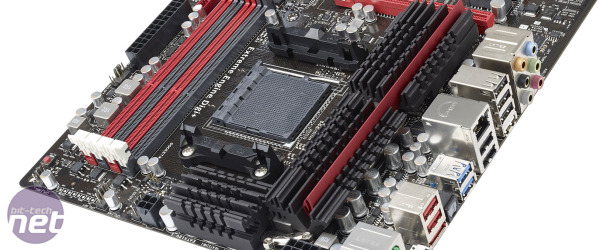
Asus Republic of Gamers Interview
Next week we'll be heading off to Taipei for the annual Computex technology trade show, casting our eyes over all that's new and shiny in the world of tech for the months ahead. However, before our bags were packed, we had a chance to ask some questions of Asus' Republic of Gamers Research and Development team, comprising Peter Tan, aka Shamino, Andre Yang aka Andre, and Bing.
Can LN2 overclocking benefit mainstream users?
BT: Hi Shamino, Andre, and Bing. Thanks for taking the time to answer our questions today. What challenges do you face when designing a motherboard such as the Maximus V GENE, which will be used by both LN2 overclockers and mainstream overclockers?
Shamino: mainly segmentation considerations. We design features based on the board’s intented segment, so that each has its own character and is able to meet the needs of different target audiences. We also have to take into account new users and gamers who may just lack technical know-how, so for example on the Maximus V GENE the “Load Extreme OC Profiles” setting, which handles overvolting, only appears when the LN2 mode jumper is manually moved to the enabled position. This is to prevent inexperienced users from accidentally loading this extreme profile and setting voltages too high, which may cause damage to hardware and of course bad feelings among users.
Andre: the main limitation for mATX boards like the Maximus V GENE is that users can’t run up to three graphics cards, but we still design and push micro ATX CPU, memory, and power design to the maximum, coming very close to full ATX standards. Even for mATX, we still do LN2 testing and make sure the overclock potential is there and ahead of other brands. But at the same time we realize mATX is for more cost and space-minded users, so we may control the features we put on compact models.
BT:Liquid nitrogen overclocking is impressive, but very few users ever try it. How does this extreme overclocking benefit less-advanced users with regards to improvements to EFI, VRM stability, and so on?
Shamino: extreme overclocking aims to squeeze every last bit of performance. A lot of times it’s small boosts here and there that add up to a noticeable performance gain for end users. It’s a one-way process, if you maintain stability with a few extra MHz when cooling is no limitation, you can also make it more stable by a few MHz more under an even wider set of environments. If you make critical parts more tolerant to higher temperatures and achieve normal-temperature stability, then most times the hardware will be able to withstand very high heat. In short, a board tuned for extreme OC will work well under environments A,B,C,D,E, while a board which is just tuned under environment A may only work well in environments A, C, and E, but not B or D.
Andre: I think if a motherboard can be overclocked to extreme performance and achieve world records by utilizing LN2, people will understand that it has a great performance design by default, even if they don’t utilise LN2 themselves. Besides, LN2 is integral to the ROG motherboard process, it’s one of the main methods we use to make sure a board is stable, can offer the best performance, and has the quality people need for extreme benchmarking.
Motherboards; they take a long time to develop!
BT: How long does it typically take to design an ROG motherboard, from inception to release?
Bing: we spend 1-2 months doing numerous tests and trials for board features, and then it takes another 3 months or more before the new project can actually kick off. After that, it takes us yet another 3 months at least to fully develop the new motherboard for production. Overall, this process requires 6 months to 1 year.
Andre: there are different timelines for designing different new models. For a totally new board that uses existing chipset technology, it takes about 3 to 6 months, but if a whole-new chipset is involved, I’d say the process takes about 6 months to a year. But compared to mainstream ASUS motherboards, ROG boards take at least 2 or 3 months longer since we want to ensure they’re the best on the market.

MSI MPG Velox 100R Chassis Review
October 14 2021 | 15:04










Want to comment? Please log in.